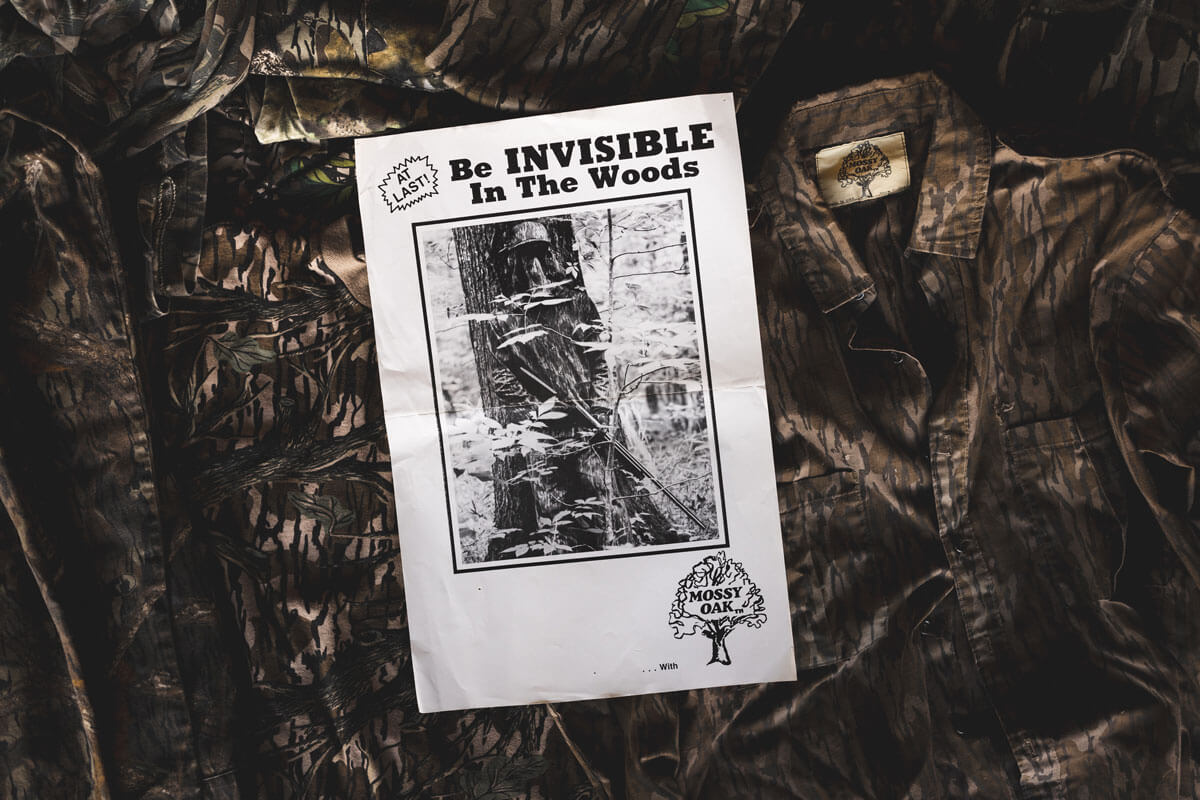The History of Hunting Camouflage

A lot has changed since 1986, when Mossy Oak first debuted with its popular Bottomland pattern.
By Brodie Swisher / Bowhunter Magazine
The First Camouflage
Blending in with their surroundings is one of the standard operating procedures for hunters. If you want to get closer to the critters you pursue, you better learn how to blend in to the landscape. But the art of blending in goes back long before any of us modern day hunters were placed on the earth.
The need for camo came as a result of technology advancements for the military during World War I. Aerial photography now began to put troops and their weaponry at risk. Success would come only for those that learned to go undetected from the eye of their adversary. Dig deep, and you’ll find that artist, Lucien-Victor Guirand de Scevola is credited with the first development of camouflage in France in 1914. The meaning of the word camouflage came from the French verb meaning, “to make up for the stage.” Practitioners in those days, many of whom were artists, were known as camoufleurs.
The British followed the French in their camouflage military practice, and years later the Americans accepted the concept for themselves.
An American uniform improvement program led to the Army Green Uniform in 1954 and by the 1960’s the Tigerstripe pattern was becoming popular following use by Navy SEALs and Green Berets in Vietnam.
The Tigerstripe pattern was not only popular among military members, but it also began showing up among hunters in pursuit of game. The pattern, named for its resemblance to the stripes of a tiger, consisted of narrow strips of green and brown, as well as broader brush strokes in black painted over a lighter shade of olive or khaki. More and more hunters began to use leftover military camo to replace the red buffalo plaid Mackinaw coats made of wool that were popular among hunters in the early days. READ FULL STORY



